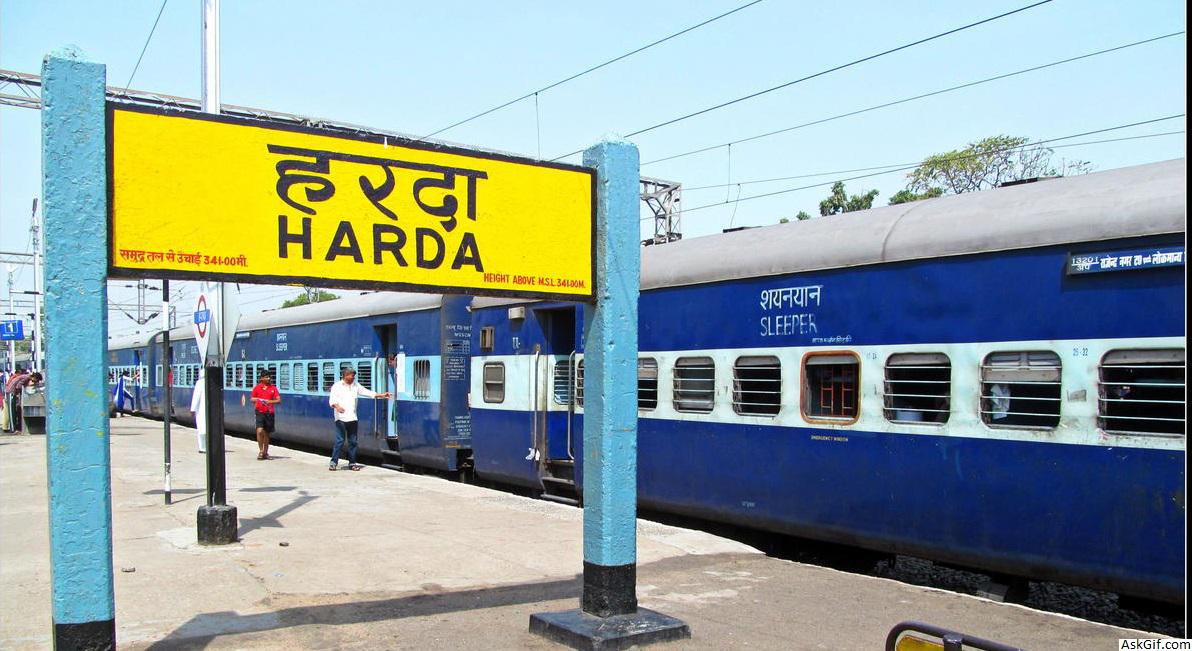Harda District
|
About:
|
|
Harda is a district located in the central part of Madhya Pradesh, India. It is predominantly
an agrarian region, known for its fertile soil and agricultural output, particularly in crops
like wheat, soybean, and paddy. The district is rich in cultural heritage and has a deep
connection with traditional rural life. While it remains relatively undiscovered by mainstream
tourism, its rustic charm, historical temples, and nearby natural beauty make it worth
exploring.

|
Location info:
|
| District Headquarters:Harda town |
| State: Madhya Pradesh |
| Coordinates: 22.34° N, 77.1° E |
Climate/Weather:
|
| Summer: Hot and dry, with temperatures ranging from 30°C to 45°C (March to June).
Monsoon: Moderate to heavy rainfall from July to September, helping agriculture in the region
thrive.
Winter: Pleasant and cool weather from October to February, with temperatures ranging between 10°C
and 25°C. |
History:
|
|
Harda has a significant historical background, having been part of the Narmada River Valley
civilization. It was ruled by various dynasties, including the Mauryas, Guptas, and the
Marathas. Harda became a district in 1998, carved out from the larger Hoshangabad district. It
has a rich cultural history with influences from both Hindu and Muslim traditions, reflected in
its festivals, local arts, and architecture.
|
Interesting things to do:
|
|
Rural Tourism:
Explore the agrarian lifestyle and participate
in activities like farming, village tours, and traditional handicrafts.
Riverfront Picnics:
Enjoy serene outings along the Narmada River, with options for fishing and boat rides.
Visit Temples:
Harda is home to many ancient temples, ideal
for exploring spiritual and architectural heritage.
|
Interesting things to Visit:
|
|
Narmada River:
The river flows through the district, providing
picturesque locations for picnics and religious gatherings.
Mata Bhadrakali Temple:
A revered Hindu temple located near Harda, known for its historical significance and religious importance.
Trekking:
The fort is located on a hill,
offering scenic trekking opportunities through the surrounding forests
and hills.
|
Mobile range info:
|
| Mobile network coverage may be weak within the fort due to its remote and elevated location.
BSNL provides the most reliable network in the area, but signal strength may vary.
|
How to reach?
|
| By Air:The nearest airport is Devi Ahilya Bai Holkar Airport in Indore, about
270 km away. |
| By Train: The closest railway station is Mandsaur, around 85 km from the fort.
Ujjain is another nearby station, about 165 km away. |
| By Road: The fort is well connected by road, and visitors can reach Hinglajgarh
by bus or taxi from nearby towns like Mandsaur or |
Nearest Visiting places:
|
Gandhi Sagar Dam:
A scenic dam located around 60 km from the fort,
offering boat rides and stunning views.
Hinglaj Devi Temple:
A small but sacred temple dedicated to
the goddess Hinglaj, located within the fort complex.
Sculpture Museum:
Many sculptures found in Hinglajgarh have been moved to museums in nearby towns like Mandsaur
and Ujjain, where they are displayed for public viewing.
Trekking:
The fort is located on a hill,
offering scenic trekking opportunities through the surrounding forests
and hills.
|
Nearest Petrol Pump:
|
| The nearest petrol pump is located in Bhanpura, about 20 km from Hinglajgarh Fort.
|
Hotels/Lodge/Accommodation:
- Hotel Shrikunj
- Hotel Sadabahar
- Shri Digambar Jain Dharamshala
|
|
|
Things to carry:
|
| Sturdy trekking shoes for exploring the fort and surrounding terrain.
Light, breathable clothing for the hot weather.
A hat, sunglasses, and sunscreen for sun protection.
Water bottles and snacks, as there are limited amenities near the fort.
A camera for capturing the historical architecture and scenic views.
Insect repellent, especially if visiting during the monsoon season. |
Tips & Suggestions:
|
| The best time to visit is during the winter months (October to February) when the weather is
pleasant.
The fort is located in a remote area, so it’s advisable to carry sufficient water, food, and other
essentials.
Respect the historical significance of the site by not disturbing the ruins or littering.
Hiring a local guide can enhance your visit by providing insights into the fort’s history and
significance.
Be cautious while trekking, as some areas of the fort can be steep and uneven. |
Help Line/Phone Number:
|
|
Police Station:
1.Police Station
Rawatbhata, Rajasthan 35.2
km
2.Police Station
Vigyan Nagar,
Kota, Rajasthan 54.3 km
3.Police Station
Dadabari Road, Dada Bari, Kota, Rajasthan 54.8 km
|
|
|
| Society/Community Phone Number9867546787 |